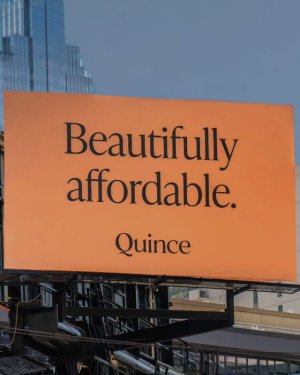
Who says you need to splash out thousands to look and feel like a million bucks?
These days, luxury isn’t about maxing out your credit card—it’s about outsmarting the system.
In a world where the cost of living keeps climbing and designer price tags feel more out of reach than ever, a new wave of savvy shoppers is flipping the script. They’re skipping the splurge and embracing high-style alternatives that deliver the same “wow factor” without the wallet pain.
From luxe-looking handbags to elevated everyday essentials, these budget-conscious fashion fans are proving that you don’t need a trust fund to turn heads—you just need to know where to look.
The rise of the dupe economy
For many of us, the word “dupe” might conjure up memories of knock-off handbags at the local markets, but today’s dupe culture is a whole new ball game.
Thanks to social media platforms, the hunt for affordable alternatives to luxury goods has become a global phenomenon. Influencers and everyday shoppers alike are sharing their best finds, comparing high-end originals with their wallet-friendly twins, and making luxury accessible to all.
Redefining luxury with smarter prices
In just seven years, one American brand has built a $1.1 billion empire by challenging everything we thought we knew about luxury. Their secret? Offering designer-inspired pieces that deliver the same high-end look and feel—often at up to 95% less than traditional retail.
At the forefront of this movement is Quince, a California-based company that’s redefining modern style with a simple philosophy: Designer items don’t have to break the bank.
By prioritizing quality, sustainability, and a direct-to-consumer model, Quince has earned a loyal following and made luxury more accessible than ever. From cashmere sweaters and elevated homewares to gourmet pantry staples, they’re proving that smart sourcing and thoughtful design can make indulgence affordable.
Also read: Luxury look for less? This affordable trend has everyone talking.
How do they do it?
Quince’s winning formula lies in its streamlined, factory-to-consumer model.
By skipping the usual retail layers—like distributors, wholesalers, and upscale storefronts—they’re able to keep prices refreshingly low while maintaining premium quality.
The fast-growing lifestyle brand has mastered the art of trend-savvy design with a refreshingly straightforward approach: they keep an eye on what’s hot, analyze top-selling luxury pieces, and craft their own elevated versions built to last and priced to impress.
Take their trench coat, for example. While a designer original like Burberry’s might cost nearly $3,000, Quince offers a sleek alternative for just $130, boasting not only style but enhanced water resistance. It’s a smart blend of fashion foresight and practical value that’s winning over budget-conscious shoppers.
The legal gray area
It’s a fair question: Isn’t mimicking designer goods just a fancy form of copying? Not quite.
The law draws a clear line between artistic expression and functional design. While logos, signature prints, and distinctive branding are protected by copyright and trademark laws, the basic structure or utility of a product—like the cut of a coat or the shape of a handbag—isn’t.
That’s why brands like Quince can legally create pieces that echo the look and feel of luxury items, as long as they avoid using protected symbols or patterns.
It’s a clever workaround that lets them deliver designer vibes without crossing legal boundaries.
Quality vs. Fast fashion
Not everyone is sold on the rise of luxury lookalikes. Some critics lump dupe brands into the fast fashion category, accusing them of fueling impulse buys and prioritizing low prices over lasting quality. But Quince’s CEO, Sid Gupta, sees things differently.
“We don’t have things that are in today, gone tomorrow. We have things that last season after season,” he explains.
Rather than chasing trends, Quince leans into timeless wardrobe staples—pieces designed to hold up over time, both in style and durability.
The algorithm advantage
Quince takes a tech-savvy approach to curating its product lineup.
Instead of relying solely on trendspotting or intuition, the brand uses sophisticated algorithms to track what’s resonating with shoppers—from enduring bestsellers to rising favorites in customer reviews.
This data-driven strategy allows them to fine-tune even the smallest design details, like zipper quality or pocket placement, ensuring each item meets real-world needs. With insights guiding every launch, Quince rolls out roughly 200 new products monthly, keeping their catalog fresh, relevant, and rooted in what people actually want.
Is it worth it?
Thinking of trying the luxe-for-less trend? If you’re drawn to designer aesthetics but not the designer price tag, it’s easy to see the appeal.
Still, smart shopping is key. Take a moment to scan customer reviews, understand return policies, and stick with retailers known for quality and transparency.
Luxury for less? Now that’s something worth talking about!
Have you ever scored a great dupe—whether it’s fashion, homewares, or something else? Do you think dupes are a smart way to save, or do you prefer to invest in the real deal? We’d love to hear your thoughts and tips in the comments below!







